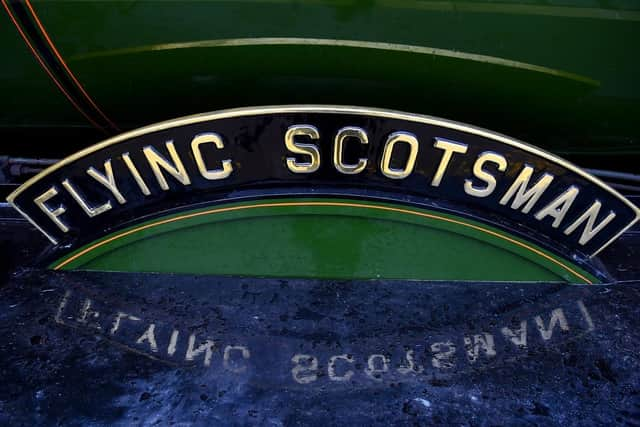Flying Scotsman 2023: How has the famous steam locomotive impacted Yorkshire, what is its significance and why do we need to keep its history preserved? National Railway Museum explains
Flying Scotsman, originally built in Doncaster in February 1923, paved the way for the railway industry in the UK. It was one of the most powerful locomotives used by the railway and designed by Sir Nigel Gresley as part of the A1 class.
One year after it was built, the steam locomotive was chosen to appear at the British Empire Exhibition in London, and the rest - as they say - is history. By this time, the locomotive number had been changed from 1472 to 4472 and was given the name ‘Flying Scotsman’ after the London to Edinburgh rail service.
Advertisement
Hide AdAdvertisement
Hide AdIt has since acclaimed worldwide fame and success, touring in various countries all over the world including the US, Canada and Australia.


Associate curator at NRM, Bob Gwynne, told the Yorkshire Post that the Flying Scotsman has become a ‘symbol of British engineering’.
When discussing the locomotive’s significance and why it is known as a national treasure, he said: “It was built and designed to haul passenger services for the newly-formed LNER. But it was really when it was selected to appear at the British Empire Exhibition in London that it began to acquire celebrity status.
“The British Empire Exhibition made Flying Scotsman famous, and it went on to feature in many more publicity events for the LNER.
Advertisement
Hide AdAdvertisement
Hide Ad“Flying Scotsman captured people’s hearts and imagination as a symbol of British engineering and the imagined speed and style of the 1920s and 1930s and even starred in its own feature film. It is now an important part of the National Railway Museum’s collection and is a working museum exhibit.
“Summing up the precise nature of Flying Scotsman’s appeal is difficult, but it has had a picturesque life and has nearly always been placed in the public eye by its owners. It was bought for the nation in 2004, having had a series of private owners following a widespread fundraising campaign which undoubtedly added to the legend.”
Flying Scotsman did not just have a positive effect on the the UK as a whole, it has also, more specifically, greatly benefited Yorkshire.
Mr Gwynne explained that whilst it is nearly impossible to find the exact measure of impact the Flying Scotsman has had in terms of the region’s economy and increase in visitors, there is no doubt that its popularity has played a significant role in Yorkshire’s tourism trade and economy.
Advertisement
Hide AdAdvertisement
Hide Ad“What we do know is that Flying Scotsman is very well known nationally and internationally - we carried out a YouGov survey recently and 85% of people had heard of Flying Scotsman,” he said.
“We know that Flying Scotsman was an important publicity vehicle for the railways during its working life and in preservation, is unique in circumnavigating the globe, visiting the USA, Australia and Canada where it attracted a loyal following.
“We know Flying Scotsman has fans worldwide and people do travel to see it and we know from the many rail tours and visits to heritage railways that Flying Scotsman continues to be a headline draw. The locomotive has taken part in numerous events to promote Yorkshire as a destination - appealing in the ‘Four Trains’ event with Welcome to Yorkshire in 2017, for example.
“After celebrating its centenary on the 24th February, Flying Scotsman will spend the rest of the year travelling across the country to give people the chance to see the engine for themselves and to take part in this special anniversary, from free static displays to rail tours, and a visit to the National Railway Museum in April.”
Advertisement
Hide AdAdvertisement
Hide AdYorkshire prides itself on its heritage and the preservation of its history is of utmost importance to maintain its value. Flying Scotsman is no exception, as Mr Gwynne explains why it is crucial to keep its history alive.
“Although Flying Scotsman has undergone numerous overhauls over the years and little of the original locomotive remains, 100 years later Flying Scotsman remains a working steam locomotive capable of travelling at speed on the main line and is a working museum exhibit that can demonstrate the principles of steam power in action,” he said.
“It is also a fantastic ambassador for the national collection and a fantastic introduction to inspire people about the railways and engineering more widely.”
Comment Guidelines
National World encourages reader discussion on our stories. User feedback, insights and back-and-forth exchanges add a rich layer of context to reporting. Please review our Community Guidelines before commenting.
